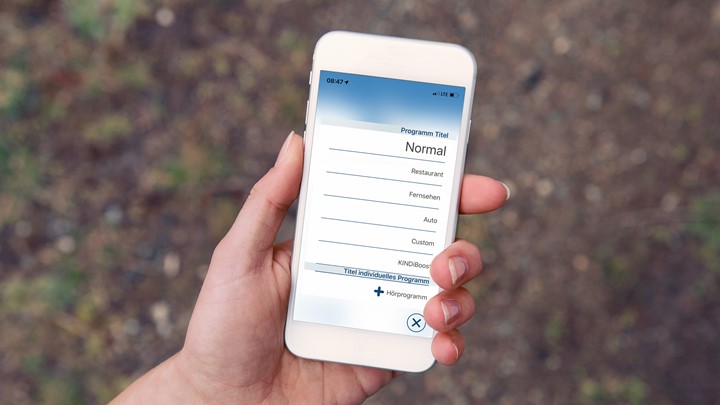Adjusting hearing aids
How hearing programs and automatic programs work
Hearing Aid Guide
Hearing aids will compensate hearing loss by amplifying the frequencies that are not optimally perceived. In order to respond perfectly to different hearing situations, the devices have different hearing programs that are adjusted for respective hearing situations. Additional features such as noise reduction or directional microphone effect are optimally adjusted to the respective hearing situation.

The basics for hearing programs
Hearing programs are not standardized, they are created individually for each hearing aid user. The basis for this is the detailed hearing analysis that the hearing care professional carries out with the client. The hearing ability is presented in the form of a diagram, with the help of which the frequency ranges or frequency bands with reduced hearing ability can be identified. The hearing care professional can use this information to adjust the hearing aids. The required amplification of the respective frequency bands is determined using complex formulas (for example NAL-NL2). For the human ear, a division into four channels is useful.
How many hearing programs are useful?
The hearing care professional stores the hearing programs in the microchips of the devices. How many programs are required for an optimal hearing solution is a personal preference largely based on your lifestyle needs. The base line is always a general hearing program, which is suitable for most hearing situations. Further settings can be programmed for the following listening situations: "Listening in noise", "Telephony", "Music", "Windy environment" and "Listening in quiet". Hearing aids usually do not have more than these. However, additional hearing programs can be loaded with smartphone Apps like KINDiLink. The hearing aids can then be adjusted by radio frequency (Bluetooth) via the mobile phone. Practical: Hearing programs can be assigned to a specific location using the positioning GPS of the mobile phone as a so-called Geo-Tag (location marker) and are automatically switched on there - for example the program "Music" in a concert hall.
A special feature of listening programs for music is that they output a wider band of sound. Most other listening programs are speech-enhanced.
Adjusting the hearing aids via automatic program control
Hearing programs can be set either manually on the hearing aid or automatically - by analysing sound information (SNR or signal-to-noise ratio, modulation frequency, level difference right/left) the respective hearing situation is identified and the appropriate function of the hearing aid is activated accordingly. For example, background noise has a specific frequency characteristic. If the chip detects this, it adjusts directionality or noise reduction accordingly.
An automatic function is not always desired. If the hearing aid wearer knows exactly which hearing situation he will be in, he may prefer to adjust the hearing aids manually. Let's stay with the example of the concert hall: In the "Music" listening program, all other controls such as "Noise reduction" are minimized or completely switched off. This guarantees pure musical enjoyment.
Discover other articles
- Smart Hearing: What intelligent hearing systems do
- The sooner an ENT specialist is consulted, the better
- Comfort to go: KINDvitalo
- Hearing loss and its causes
- Hearing aids while driving
- Optimized design for hearing solutions
- Meniere's disease
- Hearing test: Procedure and result
- Loud alone is not enough:
- Noise protection for the ears